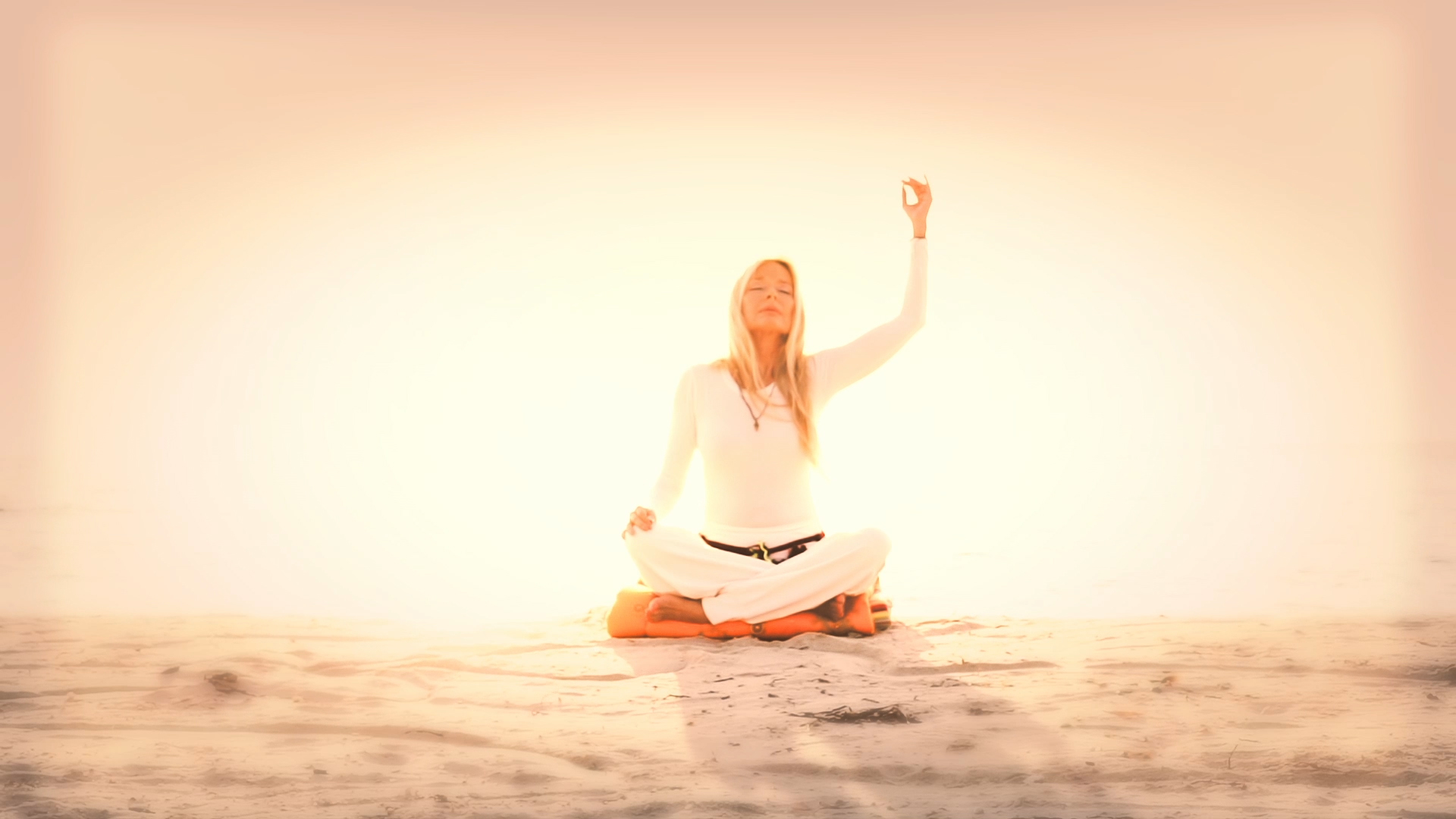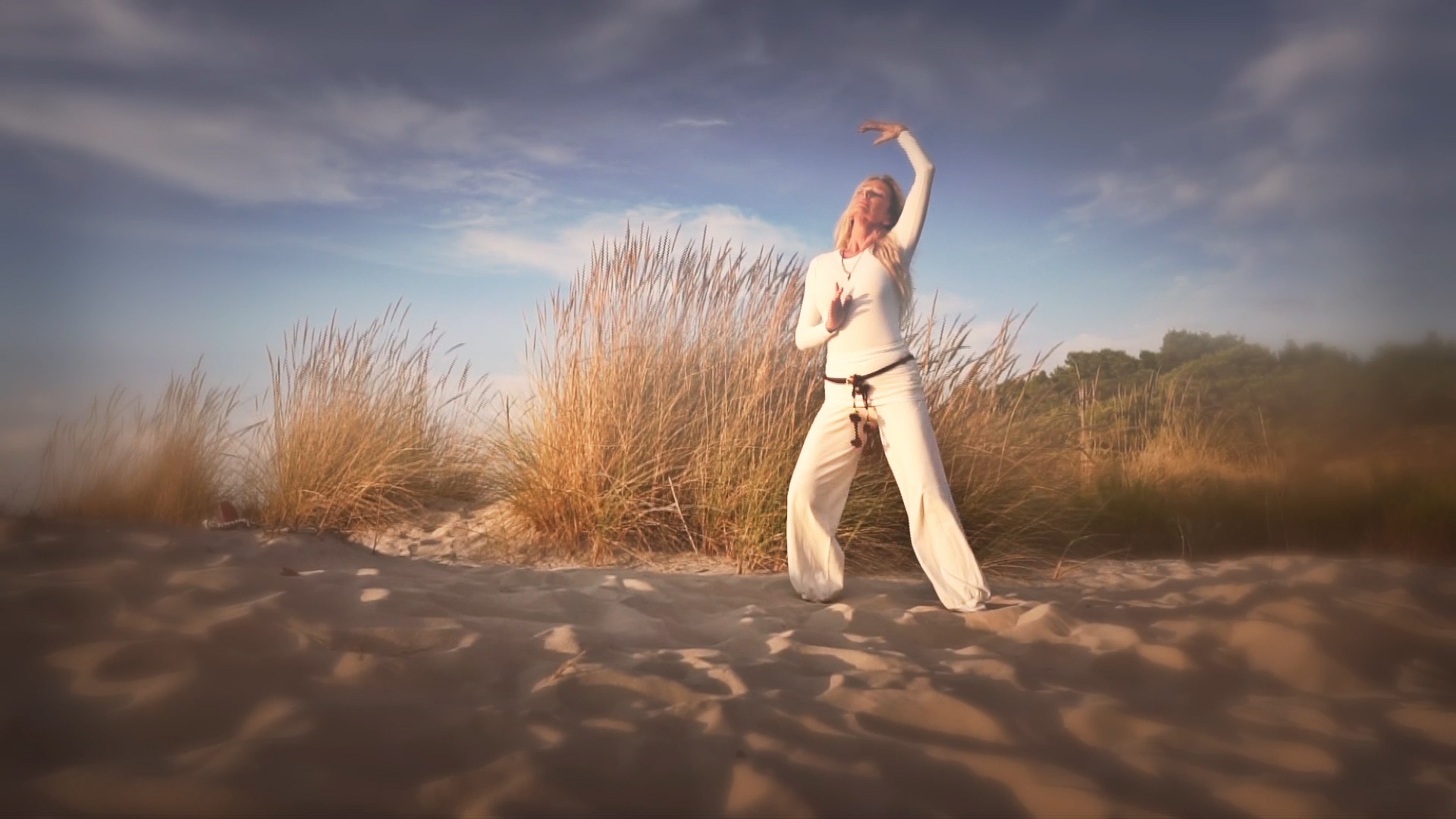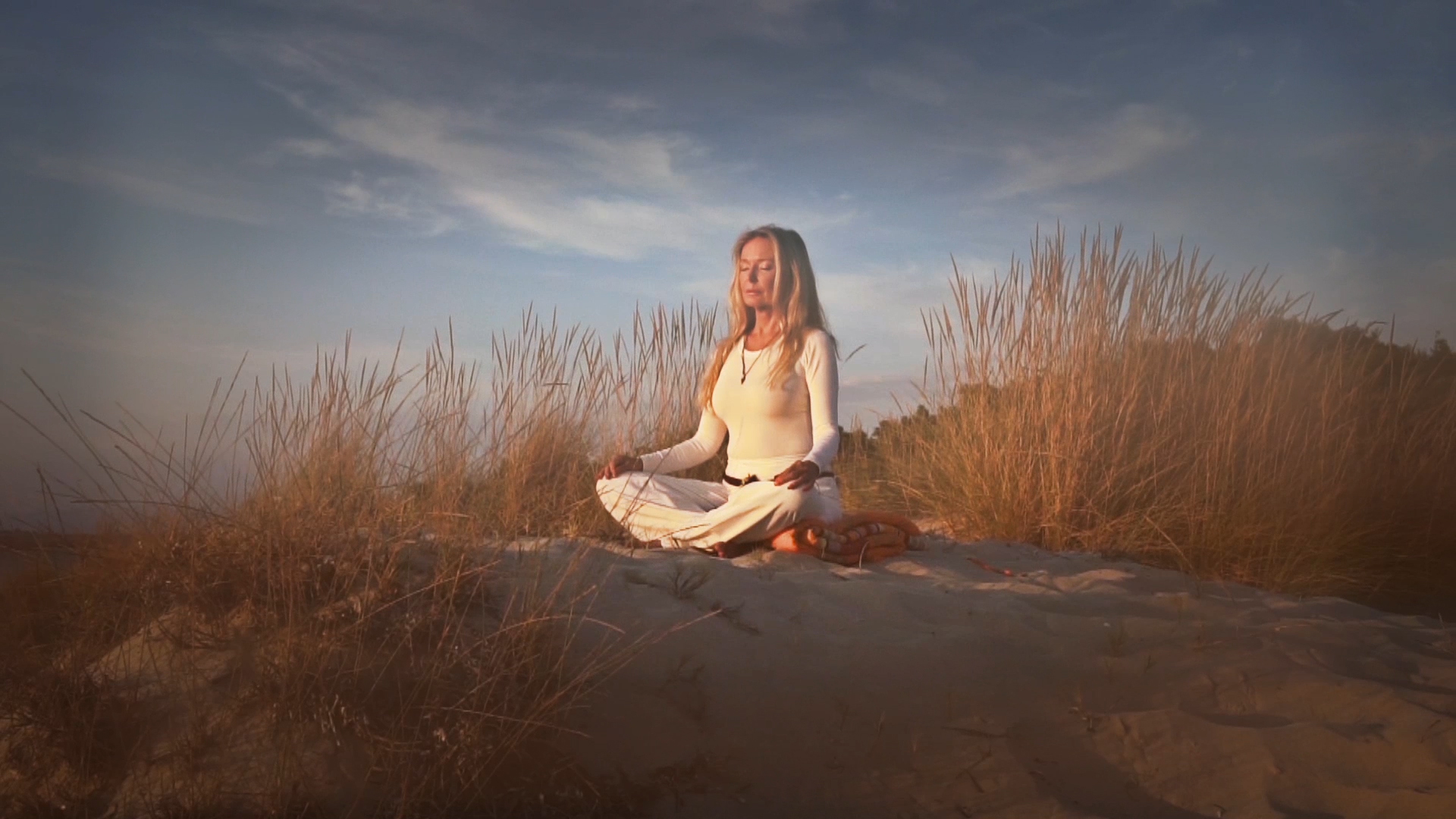The Dance of Shakti/Shiva
.. a thousands of years old moving meditation from the tantric tradition of Indian Kashmir
Tandava – as teached by Daniel Odier, the master of Shivaist Tantrism from Kashmir according to the Kaula tradition and the Spanda & Pratyabhijñā lineage – is a freely improvised, very slow and continuous meditative dance, without any voluntary action. It leads us into a deep relaxation that allows our body to tune in a very subtle way like a musical instrument, so that it can vibrate harmoniously with the vibrations of the Cosmos. This process of vibrating with totality is called „Spanda“ and is innate to us, but it cannot be manifested when we are tense and rigid on an emotional, mental or physical level.
Our body is comparable to a sensitive stringed instrument, such as a noble Stradivari. A well tuned violin resonates with the vibrations of its surroundings. Too much tension threatens to tear the strings – which often manifests in our body as pain, pressure and stress, headache and muscle tension. If they are too loose, the strings do not sound, which can be expressed for example as a lack of motivation, weakness, dissatisfaction or depression.
Awareness instead of effort and control
It is mentioned in tantric scriptures of antiquity, that Tandava, a mystical dance which has four phases, is the oldest form of Yoga and thus the origin of all forms of Yoga we know nowadays.
It begins in a sitting position with a straight spine – on the ground, on a chair or elsewhere – with sensing our entire body and its relation to space. Through using a special way of breathing, which relaxes us deeply, we raise the awareness of our body in space, charging our pelvis with energy and mobilizing our spine.
According to tantric texts – about 8000 years ago – the first yoginis and yogis assumed this way of breathing by observing the habits of tigers. They were fascinated by the ability of these wildcats, to transition from a state of deep relaxation to a fully active one in a matter of seconds. Therefore, they began to imitate them. That was the birth of Tandava.
The respiratory waves are the basis of this meditation, they carry it and create any further movement of the body – gentle, subtle and unintentional, without any effort. That’s one of the ideas of the Kashmiri Yoga – no effort, no control, no resistance to space (and the flow of life). Every effort is replaced by awareness.
During the second phase, arms, hands and fingers also participate in this movement, dancing completely independently and exploring the surrounding spherical space. The highly supple body follows this expedition and each gesture has its origin in the freely moving pelvis.
From Doing into Being
Slowness is important, because it shuts down the mind like a computer. The brain cannot follow very slow movements and finally gives up any control. It is therefore necessary to find exactly the right point at which the mental “noise” turns off.
In the third phase, the practitioner rises to a standing position and abandons all voluntary actions, to indulge into the unlimited Being. Daniel calls Tandava a “delicious lovemaking with space”, a game with our own (spatial) freedom and limitlessness. We are touching and caressing space, but we feel touched and caressed by it too. The pleasure, delight and spontaneous joy we can feel by doing this, is totally allowed and welcome in the spiritual tradition of Kashmiri Tantrism.
In the fourth phase, the meditator is sitting down again, allowing the vibrations of the dance to reverberate inside of him. He enjoys serenity, silence, peace and tranquility.
After dancing, we are mentally alert, without being physically exhausted. We feel harmony and unity with ourselves, our fellow human beings and the whole divine Creation. Out from this unity we then can begin to navigate through the Cosmos, with a wide and innocent heart.
This kind of Yoga is hardly known in the Western World, since the yoginis and yogis who practice it in the areas of the Himalayas, aren’t at all keen to spread it. Therefore there are only few people in the world who teach it.
Tandava does not require any previous experience or special physical skills. The simplicity, ease, and effects of this Yoga is amazing.
Immersion into the flow of life
Within the first few hours of practice, we begin to taste the infinite subtle vibrations. But freeing our whole psycho-physical system of its barriers – such as belief patterns, viewpoints, projections, conditionings, expectations, concepts and any automatism, takes more regular practice.
When we courageously let go of all the deceptive collaterals, which temporarily reassure us, but prevent us from the awareness of reality, our body will be able to expand into infinite dimensions. Then we will be like carefree children – present and conscious of every moment, enjoying life to the fullest through all our senses, surrendering trustingly into its flow…












